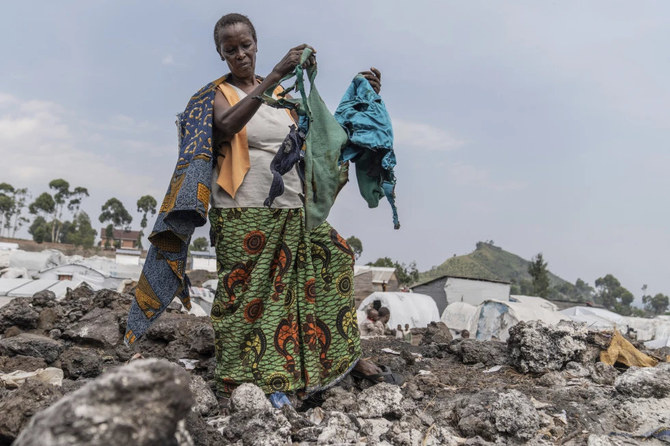GOMA, Congo: A fire at a displacement camp in eastern Congo destroyed around 50 makeshift tents, leaving dozens of families without shelter, according to the United Nations, which said the fire is believed to have started during cooking at a camp.
The Muganga displaced people camp near the provincial capital Goma was hit by fire Wednesday. It had already endured bomb attacks in early May, which killed at least 18 people and injured 32 others, a UN spokesman said. It wasn’t clear what type of explosives were used in those attacks. Most of the victims were women and children.
“While I was trying to empty the house of my valuables, I couldn’t save my most precious items: my tokens to receive various humanitarian assistance,” Anne Marie Nikuze, 60, a displaced person living in the camp with her children and grandchildren told The Associated Press. “The little we had has also gone up in flames,” she said.
“We escaped the recent bomb attacks and now, it’s the fire that has struck us,” Furaha Mulema Mariam, 42, a mother of four, said. “The only luck is that it happened during the day, if it had been at night we would all be dead.”
The decades-long conflict in eastern Congo has produced one of the world’s worst humanitarian crises, with over 100 armed groups fighting in the region, most for land and control of mines with valuable minerals. Some are fighting to try to protect their communities. Many groups are accused of carrying out mass killings, rapes and other human rights violations.
The violence has displaced about 7 million people, including thousands living in temporary camps like the one that was attacked last month. Many others are beyond the reach of aid.




























